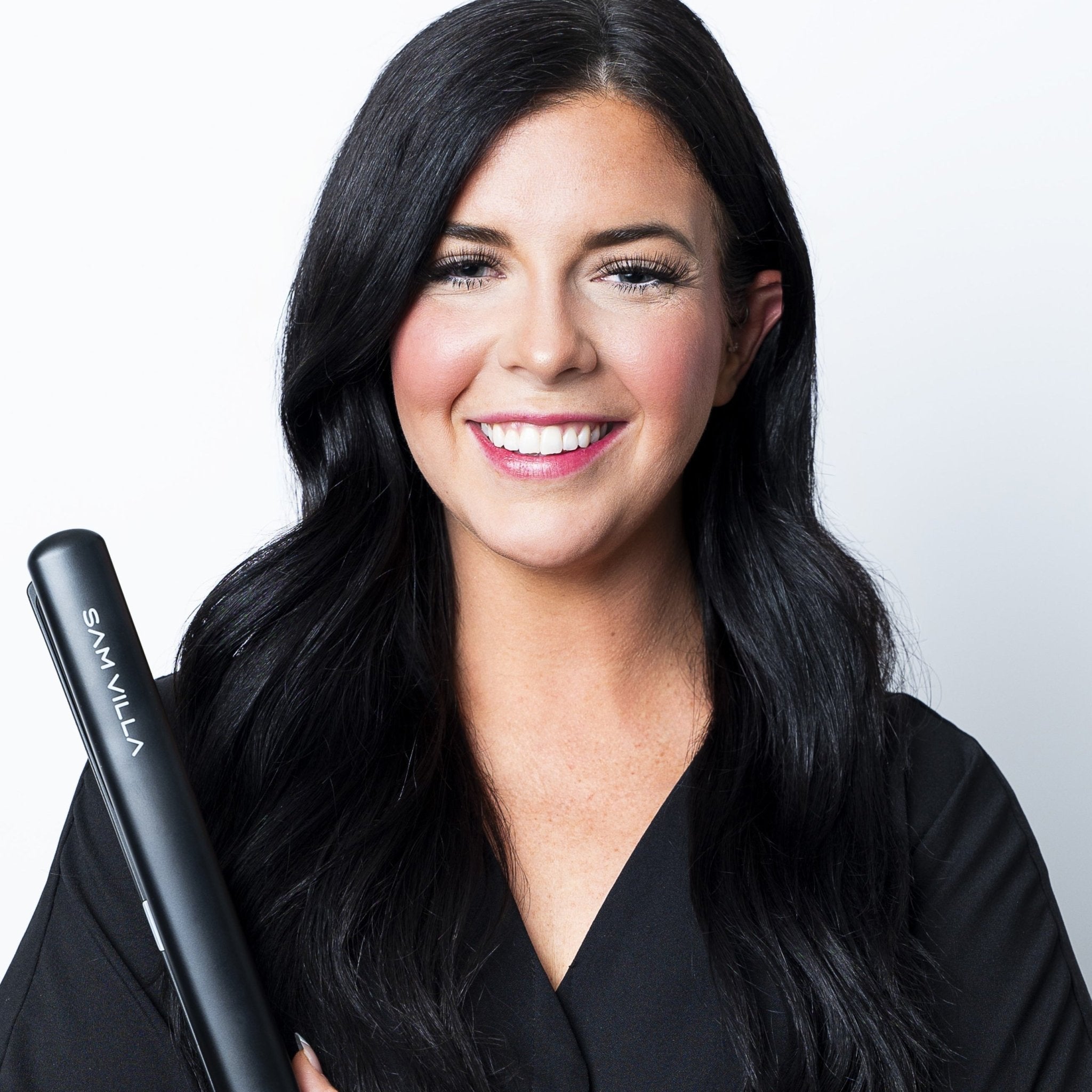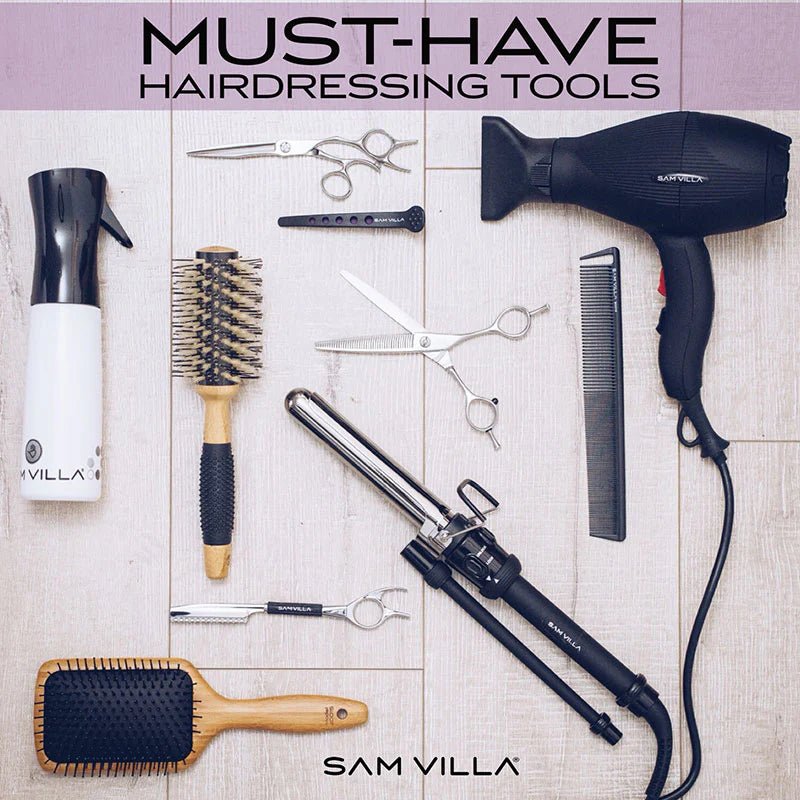Hairdressers rely on their bodies, and especially their hands, to create beauty and bring confidence to their clients each and every day. But with this repetitive work comes the risk of conditions like Repetitive Strain Injury, Carpal Tunnel Syndrome, and Tendonitis. That’s why it’s essential to know how to protect and care for your most valuable tool—your body. Here, we're diving into how to prevent and treat these conditions.
What is Repetitive Strain Injury?
A collective medical term, also referred to as overuse injury, resulting from excessive strain placed on one or more parts of the body. RSI conditions develop from the demand of restricted postures, repetitive motions and tasks, which are most commonly related to occupations such as Dentists, Electricians and Hairdressers. In fact, Carpal Tunnel Syndrome and Tendonitis are the most common work-related injuries within the U.S.
It may come as a shock to know, 71% of hairdressers have developed an injury related to their job, and health issues are on the rise. Aches and pains may be more than a hard days’ work and we hope with increased knowledge and more awareness, hair stylists feel inspired to take the proper measures to prevent future health concerns.
In this article we will discuss:
- What is Carpal Tunnel Syndrome?
- What is Tendonitis?
- Why and how these conditions can affect hairdressers
- Parts of the body where hairdressers can typically suffer from RSI
- Symptoms of Repetitive Strain Injury
- Prevention of Repetitive Strain Injury for hairdressers
- Use of ergonomic tools to help prevent Repetitive Strain Injury
- Treatment of Repetitive Strain Injury
1. What is Carpal Tunnel Syndrome?
Carpal Tunnel Syndrome is a progressive condition formed when the median nerve, radiating from the hand to the forearm, experiences compression at the wrist.
The median nerve is encompassed by the carpal tunnel, a narrow passageway consisting of tendons, bones and ligaments. This nerve controls sensations to the palm side of the fingers (aside from the pinky), and sends impulses triggering the fingers to move. When stress is placed on the nerve consistently, you have a high chance of developing CTS, currently a condition affecting between 3 and 6 percent of people in the U.S.
2. What is Tendonitis?
Tendonitis is the inflammation of a tendon – a fibrous cord that acts as an anchor to the root of a bone.

Tendons release energy which trigger movement to the joints resembling a pulley method. Stress placed on a muscle causes the tendons to swell and inflame, affecting joints such as the shoulders, wrists, knees and ankles.
3. How do these conditions affect hairdressers?
Most days consist of standing for hours and twisting and turning our bodies to get the right angle. Without being aware of our adopted habits, improper positioning and using the wrong tools place us high on the list for developing RSI conditions. We are so passionate about creating the best haircut and style for our clients, we often forget how these movements are impacting our bodies.
4. Parts of the body where hairdressers can typically suffer from Repetitive Strain Injury
Our body is the most valuable tool within the craft of hairdressing. Consultations, hair color, haircuts, styling and blow drying — every service we provide requires the use of several body parts, all day long. Here’s a breakdown of the body parts and behaviors we may want to pay special attention to.
Most Common Areas of RSI:
- Shoulders
- Elbows
- Forearms
- Wrists/Hands
- Neck
- Back

Improper postures, strains, repetitive movements:
- Certain cutting and blow drying techniques force the arms above the shoulders, and the neck/back to bend.
- Dull shears force repetitive movements affecting the hands/wrists.
- Failure to use ergonomic shears places excessive strain on all joints - this is why Sam Villa put so much focus on developing an innovative line of shears to correct just this.
- A client's chair that is non-adjustable in height forces static positions and improper posture, forcing strain on all joints.
- Low-height wash basins will forcing you in a forward-flexed position when shampooing or applying a gloss, which strains all your joints.
- Failure to use a good hair brush and ergonomic blow dryer forces repetitive movements and excessive strain on the neck, shoulders, wrists, hands and elbows.
- Standing upright for long periods of time puts excessive strain on feet, ankles, and knees.
- Failure to use trolleys and rolling stools encourages bad posture.

5. Symptoms of Repetitive Strain Injury, Carpal Tunnel Syndrome or Tendonitis
Symptoms of Repetitive Strain Injury, Carpal Tunnel Syndrome or Tendonitis may not develop immediately, which makes awareness extremely important for early detection.
For Carpal Tunnel Syndrome, be on-alert for these warning signs:
- Burning, tingling, or itching in the palm of the hand
- Fingers feeling swollen
- “Restless” hands
- Decreased grip strength
- In severe cases, the inability to decipher hot from cold by the touch
For Tendonitis, be on-alert for these warning signs:
- Shooting pain in the neck, shoulders, upper back, forearms, wrists, hands
- Tremors, clumsiness and numbness
- Weakness in the hands or forearms
- Chronic cold hands, particularly the fingertips
Read on to learn about how to relieve and prevent RSI. Take action now, and speak to your medical practitioner as soon as possible if you suffer from any of these symptoms.
6. Prevention of Repetitive Strain Injury for Hairdressers
-
Posture:
To prevent Repetitive Strain Injury proper posture is key. Proper body positioning is critical in our craft. Watch this video from Andrew Carruthers, Education Director for Sam Villa, as he shares a few hot tips on the importance of good posture behind the chair.
-
Finger Dexterity Exercises:
In this video Sam Villa, Founding Partner of Sam Villa, and Redken Global Artistic Ambassador offers exercises to ergonomically correct our hand positions and to help prevent RSI conditions.
-
Scissor Control Tips Eliminate Hand, Wrist and Shoulder Pain:
Andrew Carruthers, Education Director for Sam Villa shares impactful tips and techniques to minimize the risk of overuse injuries behind the chair.
Take a break!
Missing out on your lunch break does more damage than you think! You can decrease your chances of developing serious medical conditions by simply taking a few minutes to rest throughout the day!
7. Ergonomic Tools can help prevent Repetitive Strain Injury for hairdressers

- Use Shears with a forward set, crane handle
Each and everyday hairdressers use their bodies to replicate consistent movement. They use their fingers, hands, wrists, and elbows to cut, blow-dry, shape and finish. If we look specifically at haircutting and the position the hand is in when creating a haircut, you notice that this includes reaching the thumb back towards the ring finger meaning the thumb tendon is compromised with stress and inflammation.
In addition to this, if the elbow is held high to cut, it puts pressure on the neck and elbows. And if you’re constantly in this position, it can cause a great deal of stress and pain on your entire body. For this reason, Sam Villa consulted with a doctor to design shears that are ergonomically correct so that they actually feel good in the hand and reduce and eliminate pain.
A forward set, crane handle shear is the most cutting-edge design in the industry. Its ergonomic design forces your hand into a natural and neutral cutting position, and enables you to cut hair with your elbow lowered to prevent stress on your neck and shoulders.
Sam Villa Shears work to improve symptoms of strains and repetitive movements with an ergonomic forward set thumb position that forces the elbow down while cutting, to eliminate neck and should pain.

- Use Swivel Shears
The rotating thumb on swivel shears provides increased flexibility and comfort to improve our cutting techniques. Many stylists that experience pain in their hand and wrist will benefit from using a swivel shear as it allows for cutting hair in any position with your elbow in a lowered position.
Watch as Andrew Carruthers explains in depth, how a swivel shear can enhance your comfort.
- Scissor Control Tips to Eliminate Hand, Wrist and Shoulder Pain
A good cutting stool will have the ability to roll and swivel. Cutting stools help hair stylists to reduce stress on their lower body and back, by being able to sit while cutting, coloring or styling hair. A cutting stool also allows stylists to practice better posture, resulting in less injuries to the back, neck and shoulders.
- Maintain your Shears!
Keeping your shears conditioned on a daily basis will not only produce better haircuts, but sharper scissors will also reduce the amount of stress on your hand and wrist from opening and closing the scissors with less effort.
- Clean and oil your blades every day. This will remove residue that can dull the blades.
- When your shears begin to feel dull and cleaning or adjusting tension doesn’t help, make sure to get them sharpened.
- Store your shears in a case to avoid accidental dropping or theft.
- Always use shears that feel comfortable. Shears with a crane handle are recommended for the most comfort and correct ergonomics.
- Use shears that have a good balanced weight. A blade-heavy shear may put unnecessary stress on the wrist.
- Don’t over-tighten your tension screw. If your shears won’t cut without being tightened, they probably need to be serviced.
- Maintain a Good Dryer Position
Decrease excessive strain on your neck and shoulders using a lightweight, ergonomic blow dryer. Avoid lifting your arms above your shoulders to maintain good body positioning. The best way to do this is by using a blow dryer with a rotating nozzle, allowing you to direct heat where you need it while placing your body in a better and more comfortable position.
8. Treatment of Repetitive Strain Injury (RSI)
*Consult your medical practitioner right away if you think you may have any symptoms of RSI
Non-Surgical Treatments:
These are alternative therapies that may help improve the symptoms of RSI conditions:
- Medicine: Reduces inflammation
- Massage: Relieves strain on joints
- Rest: Leads to less repetition
- Acupuncture: Pain relief, signals blood flow
- Yoga: Strengthens and stretches joints
- Wrist Brace: Rest for the median nerve
Surgical Treatments:
After 6 months of experiencing symptoms without positive results from treatment, surgery may be required. This decision must be made by consulting with your medical practitioner.
How long does it take for Repetitive Strain Injury to heal?
There are several underlying conditions and stages within RSI that will determine this. Acute RSI is relatively simple to assess and can be treated successfully. Chronic RSI, when not treated properly, can develop into much more serious conditions.
Will Repetitive Strain Injury go away on its own?
There must be measures taken to treat RSI. Some conditions may be treated with certain exercises, stretches, and lifestyle measures, however it’s important to get a doctor’s advice on the severity of your condition.
Summary
We hope reading this article has inspired you and raised awareness for all conditions within Repetitive Strain Injury. With significant connection between hairdressers and overuse injury, it’s our goal to trigger the signs of early detection and decrease the chances of developing these serious conditions.
Hairdressers share the passion of making people feel and look beautiful every day. We have the unique gift of being able to use our body to bring our visions to life. This is why our body is the most valuable tool within our craft. Don’t wait until it’s too late. Using the proper precautions, correct posture, and the use of ergonomic tools are simple ways to greatly impact your career. Listen to your body, don’t compromise doing what you love by putting off warning signs.






